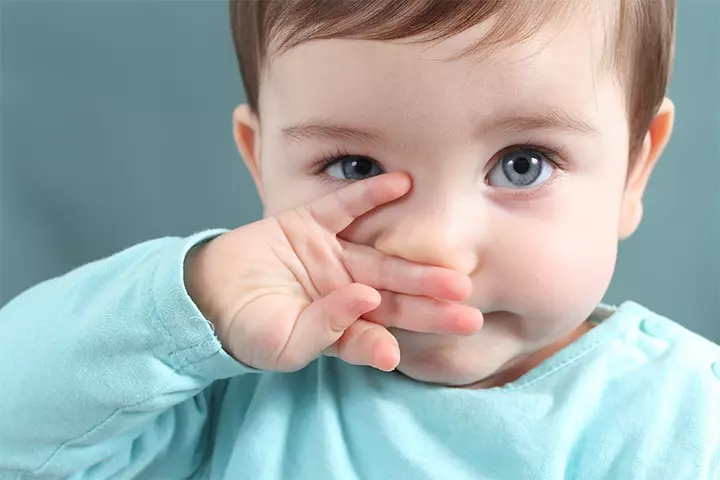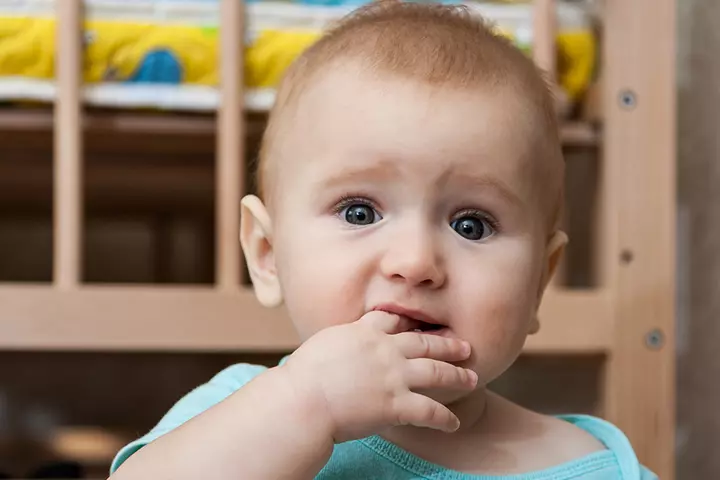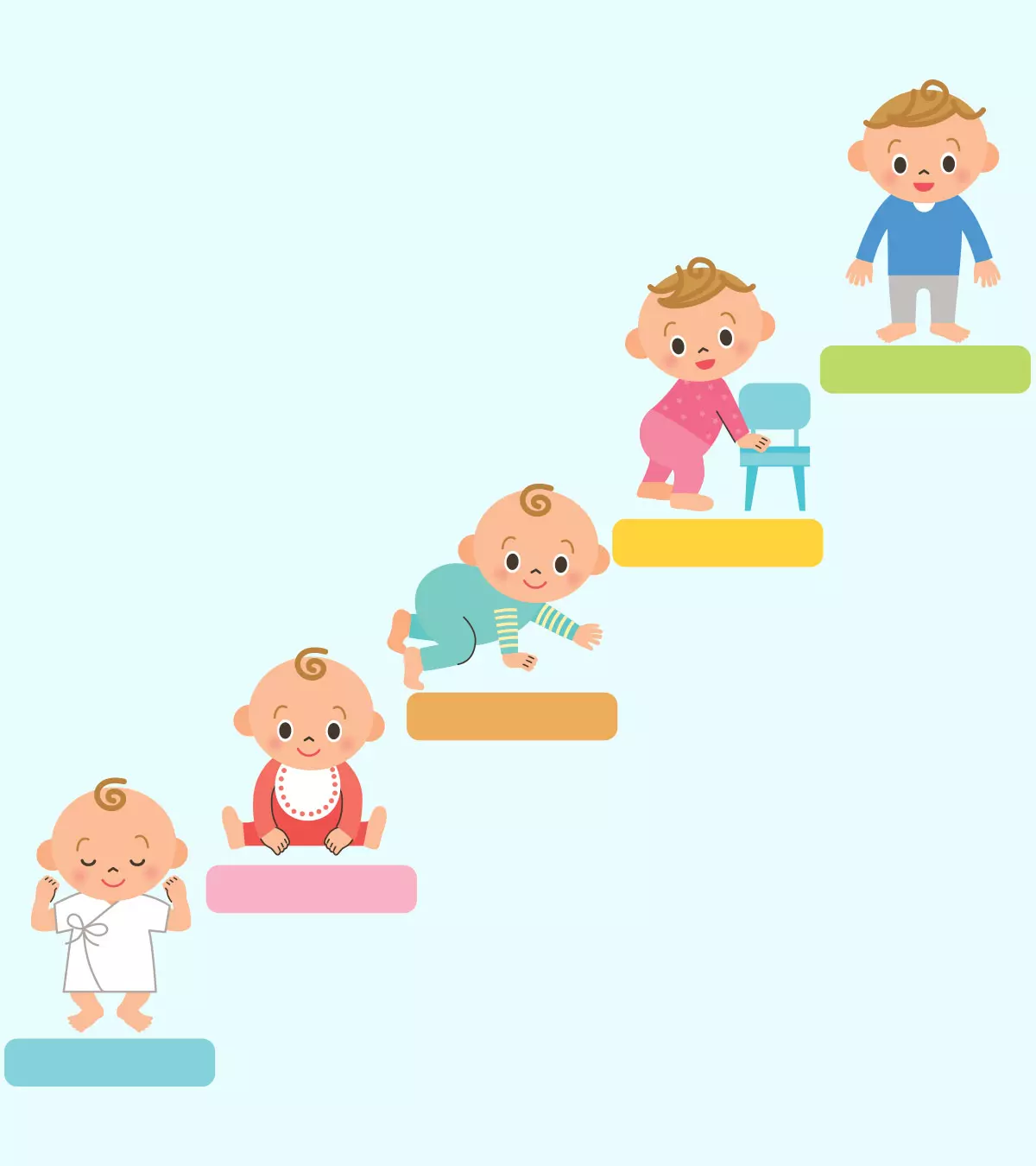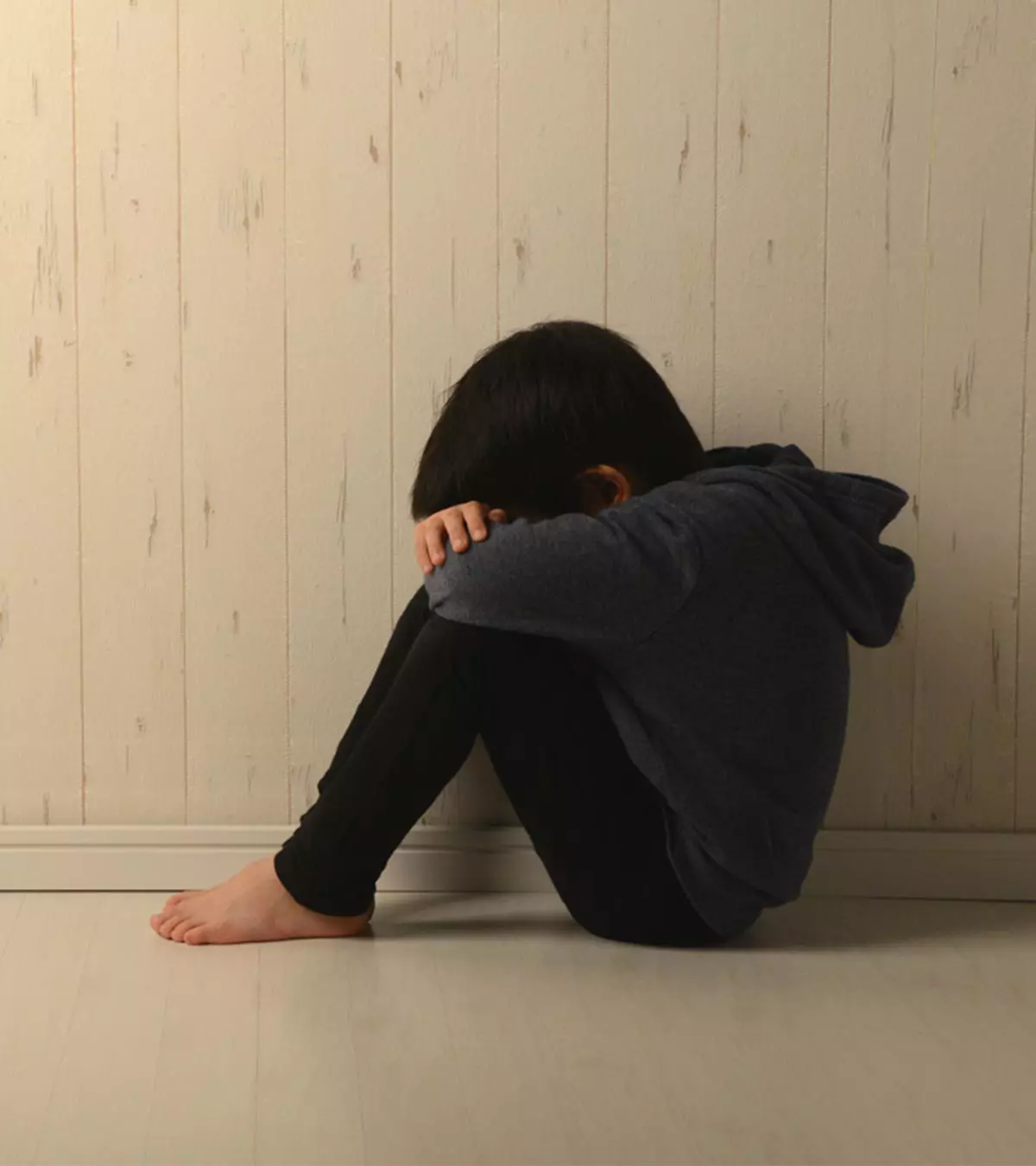
Image: Shutterstock
Newborn babies cry but don’t shed tears; this triggers a common question – when do babies get tears? The lacrimal glands or tear ducts can’t produce tears immediately after birth. Most babies only begin producing tears at around two weeks of age. Further, the tears are often just enough to keep their eyes moist and not enough to roll down their cheeks. Most babies shed tears that you can see only when they are two months old or older.
Read on as we explain when babies produce tears and the factors that might affect tear production in babies.
 Did you know?
Did you know?Key Pointers
- Babies begin to cry after two to three weeks when their tear glands have fully grown and are capable of producing tears.
- Early tear shedding may be caused by a blockage or infection of the tear ducts, which manifests as redness or pus in the eyes.
- Absence of tears even after one month can indicate underlying morbidity.
- In both situations, medical intervention is essential for adequate treatment.
Why Don’t Newborns Shed Tears?

Image: IStock
Tears are produced by a lacrimal gland (tear gland) present at the upper edge of each eye (1). At birth, it can produce tears sufficient enough to lubricate the eyes. However, the glands are not adequately developed to produce a quantity of tears that can roll down the eyes while crying when they are overwhelmed, anxious, fearful, or in distress. Therefore, you are unlikely to see a newborn baby crying without shedding tears.
When Does A Baby Begin To Shed Tears?
Most babies begin to shed tears sometime between the ages of two and three weeks (2). By this age, the lacrimal glands are developed enough to produce a significant amount of tears noticeable while crying.
What Happens If Newborns Shed Tears Early?
It’s unlikely for a newborn to shed tears up to three weeks after birth. If the baby does have teary eyes soon after birth or up to three weeks, it could indicate an underlying problem.
The following are some of the common conditions that could cause a newborn to shed tears earlier than usual. Many of the conditions cause teary eyes even when the baby is not weeping.
1. Blocked tear ducts

Image: Shutterstock
Tears move through small openings at the inner corner of the eyes and flow through the tear ducts (nasolacrimal ducts), which drain the fluid into the nasal passages. Sometimes, in babies, the opening to the duct is fully or partially blocked by a thin piece of tissue. Tears have no place to drain out of the eye and flow out on the face (3). This condition is called lacrimal duct obstruction or dacryostenosis.
Blocked tear ducts are common among infants, and about 6% of newborns have a blocked tear duct at birth. Most blocked tear ducts open by themselves by the age of 12 months. A pediatrician can teach parents ways to gently massage the tear duct to stimulate its opening.
 Quick fact
Quick fact2. Infections

Image: Shutterstock
Several infections could cause tearing in newborns. A few notable conditions are upper respiratory infections and conjunctivitis (4). A clogged tear duct may also become infected by pathogens. Common symptoms of infections include redness in the eyes, presence of pus, and inflammation.
Upper respiratory infections, such as the common cold, can lead to excess tearing. Conjunctivitis, also called pink eye, can occur due to pathogens (viruses, bacteria, and fungi), allergens, and even foreign particles (5). Relevant treatment of the condition can lead to relief from tearing.
3. Glaucoma
Pediatric glaucoma is an eye condition where the optic nerve is damaged (6). It may affect one or both eyes. The condition usually, but not always, occurs due to increased pressure (intraocular pressure) inside the eye, leading to the damage of the optic nerve. Excessive tears are one of the many symptoms of the condition (7).
Babies can have glaucoma at birth due to various reasons, including genetic problems and poor eye development. Medication and surgery are usually required to correct any eye defects and restore normal eye functions. The prognosis post-surgery is good, especially when treatment is initiated early.
When To See A Doctor?

Image: IStock
Visit a pediatrician if the baby sheds tears before three weeks of age. Most of the conditions that cause early tearing have symptoms noticeable to the parents and the pediatrician during regular check-ups.
See a doctor if the baby has:
- Pus in the eyes
- Redness of the white of the eye
- Eye irritation
- Swollen upper or lower eyelid
- Cloudy appearance of the pupil
What Happens If A Baby Continues To Not Produce Tears?

Image: Shutterstock
If your baby is growing well and has healthy eye development, there is usually nothing to worry about the lack of tears. The tear glands in some babies may take several weeks to develop enough to produce tears that shed. Nevertheless, if your baby does not release tears even after attaining the age of one month, consult a pediatrician.
Some conditions that may cause a lack of tears in older babies include:
- Alacrima: It is a rare condition that causes poor or lack of formation of tears. Several genetic disorders can cause alacrima (8). Long-term management with topical lubricants might be needed in cases of alacrima (9).
- Dehydration:Dry and sunken eyes are some of the significant symptoms of dehydration in babies (10). Dehydration is usually a concern when the baby has diarrhea due to gastrointestinal infections. Adequate breastfeeding or formula feeding and oral rehydration with electrolyte solution after consulting a doctor can provide relief (11).
Frequently Asked Questions
1. Why do babies burst into tears?
Babies can burst into tears or often have watery eyes due to the small size of tear ducts compared to adults. Teardrops from the eyes are drained to the nose, and the draining can be slower when the duct is small (12). This may get better by around one year in most cases.
2. Is shedding a tear the same as crying?
Shedding tears can be due to various reasons, such as exposure to allergens or irritants, and it may not always be related to crying in babies. Generally, a baby cries or sobs to communicate distress due to certain stimuli or sensations, such as hunger, pain, or stress. Babies cry with tears within two or three weeks after birth when their lacrimal glands are developed (13).
3. Why is my baby getting tears from one eye only?
A blocked tear duct may cause this. Tear ducts are tiny tubes that carry tears from the eye to the nose. When a baby is born, the membrane at the bottom of the tear duct, next to the nose, usually expands gradually, resulting in a clogged tear duct. This causes an obstruction. A newborn baby may experience one or both of their eyes becoming wet and sticky due to this obstruction (14).
It can be gut-wrenching for parents to see tears falling out of their baby’s eyes. Newborn babies keep crying but do not shed tears immediately after birth as their lacrimal glands are still underdeveloped. They may begin shedding tears by two to three weeks of age. If your baby begins to shed tears earlier than three weeks of age or does not shed tears even after one month, you may ask for your doctor’s advice.
Infographic: Causes Of Excessive Tears In Babies
It is normal for newborns not to shed tears while crying for a few weeks after birth. Therefore, if you find your infant shedding tears, it may indicate an infection or a condition that requires a doctor’s attention. This infographic highlights the conditions that may cause teary eyes in newborns. Illustration: Momjunction Design Team
Illustration: When Do Babies Start GettingProducing Tears?

Image: Dall·E/MomJunction Design Team
References
1. Lacrimal gland; U.S. National Library of Medicine
2. Blocked tear duct; U.S. National Library of Medicine
3. Blocked Tear Duct (Dacryostenosis); Boston Children’s Hospital
4. Christopher J. Brady;Eyes, Watery; MSD Manual Consumer Version
5. Pink Eye: Causes and How It Spreads; Centers For Disease Control And Prevention
6. Glaucoma; U.S. National Library of Medicine
7. Childhood Glaucoma; Glaucoma Research Foundation
8. Adams and C.P.Schaaf;Diagnosis and genetics of alacrima; NCBI
9. Triple A syndrome; Genetic and Rare Diseases Information Center
10. Diarrhea in infants; U.S. National Library of Medicine
11. Treating Dehydration with Electrolyte Solution; American Academy of Pediatrics
12. Watering Eyes; National Health Services
13. Crying In Infancy; MedlinePlus
14. Facts About Tears; American Academy of Opthamology
14. Blocked Tear Duct (Dacryostenosis) in Children; Cedars Sinai
Community Experiences
Join the conversation and become a part of our nurturing community! Share your stories, experiences, and insights to connect with fellow parents.
Read full bio of Dr. Wayne Hough
Read full bio of Jessica Albert
Read full bio of Rohit Garoo
Read full bio of Vibha Navarathna



















